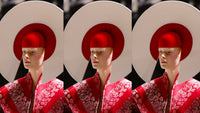FASHION, GENDER AND SOCIETY
1 minute 60 seconds read
Fashion has always been a mirror of societal changes, norms, and values.
In the past, clothing was strictly divided by gender, with men and women expected to stick to distinct styles. Men's fashion emphasized practicality and authority, featuring suits, trousers, and muted colors, while women's fashion focused on beauty and modesty, showcasing dresses, skirts, and decorative elements. However, historical records suggest that men once wore skirts, a practice that persists in some cultures' traditional clothing. Interestingly, men were also the first to wear heels during the 17th century, despite later being ridiculed for looking too feminine. In the 19th century, the initiative of Amelia Bloom to introduce trousers aka 'bloomers' for women went unsuccessful, as Victorian era saw a conservative womenswear. The only item adapted from menswear, was the jacket for riding a horse.
These distinctions were deeply rooted in cultural norms, with different societies having their own specific gendered clothing practices. For example, Western societies saw men in breeches and women in skirts, while Eastern cultures had gender-specific versions of traditional garments such as kimonos and saris. In some periods, sumptuary laws even dictated what people could wear, reinforcing both class and gender distinctions.
The early 20th century saw shifts in these rigid norms, particularly with the rise of women's suffrage and the flapper movement of the 1920s, which saw women adopting shorter skirts and looser silhouettes. The two World Wars further inflicted this change, as women entered the workforce and needed practical clothing like trousers. The mid to late 20th century was a pivotal period for gender and fashion. 'Power Dressing' became more popular in the 90s, with padded shoulder suits, for women in careers such as lawyer, banker, etc, that was consequently taken from menswear.
The transformation of materials broke barriers between genders
The revolutionization of materials in the fashion industry has indeed played a significant role in breaking down traditional clothing barriers between the two sexes. This transformation has been driven by various factors including changes in societal norms, gender equality movements, and advancements in textile technology. These advancements have led to more diverse, inclusive, and versatile clothing options that cater to a broad spectrum of gender identities and expressions.
In the 1960s, a significant cultural shift was underway, with the civil rights movement, feminist movement, and counterculture movement all challenging traditional norms and values that blurred the lines of gender-specific fashion. Designers like Yves Saint Laurent introduced iconic pieces like Le Smoking tuxedo for women, and the counterculture movement embraced androgyny with figures like David Bowie and Grace Jones pushing the boundaries of traditional gender norms.



(1st) YSL Le smoking tuxedo for women 1966 (2nd) Grace Jones performing in NY 1977 (3rd) David Bowie - 1973
In recent decades, androgyny and unisex fashion have become more mainstream. High fashion designers such as Jean-Paul Gaultier, Alessandro Michele, etc, have blurred the lines between men's and women's fashion on runways. The rise of non-binary and gender-fluid identities has significantly influenced contemporary fashion, with many brands and designers creating collections that defy traditional gender standards. Celebrities and influencers like Billy Porter, Janelle Monáe, and Harry Styles have embraced gender-fluid fashion, further popularizing these styles.



(1st) Harry Styles for Vouge 2020 (2nd) Janelle Monáe for The Femme Dandy 2011 (3rd) Billy Porter for Grammys 2020
The impact of these changes is visible in societal acceptance and representation. There is increased visibility of diverse gender identities in fashion media and advertising, helping to shift public perceptions. Legislative and policy changes in some regions, such as gender-neutral dress codes in workplaces and schools, further support the movement towards inclusivity.



(1st) Jil Sander Spring 2019 Menswear collection (2nd) His n` Hers AlphaomegaLondon (3rd) Lay Zhang in Anaakiki FW21







